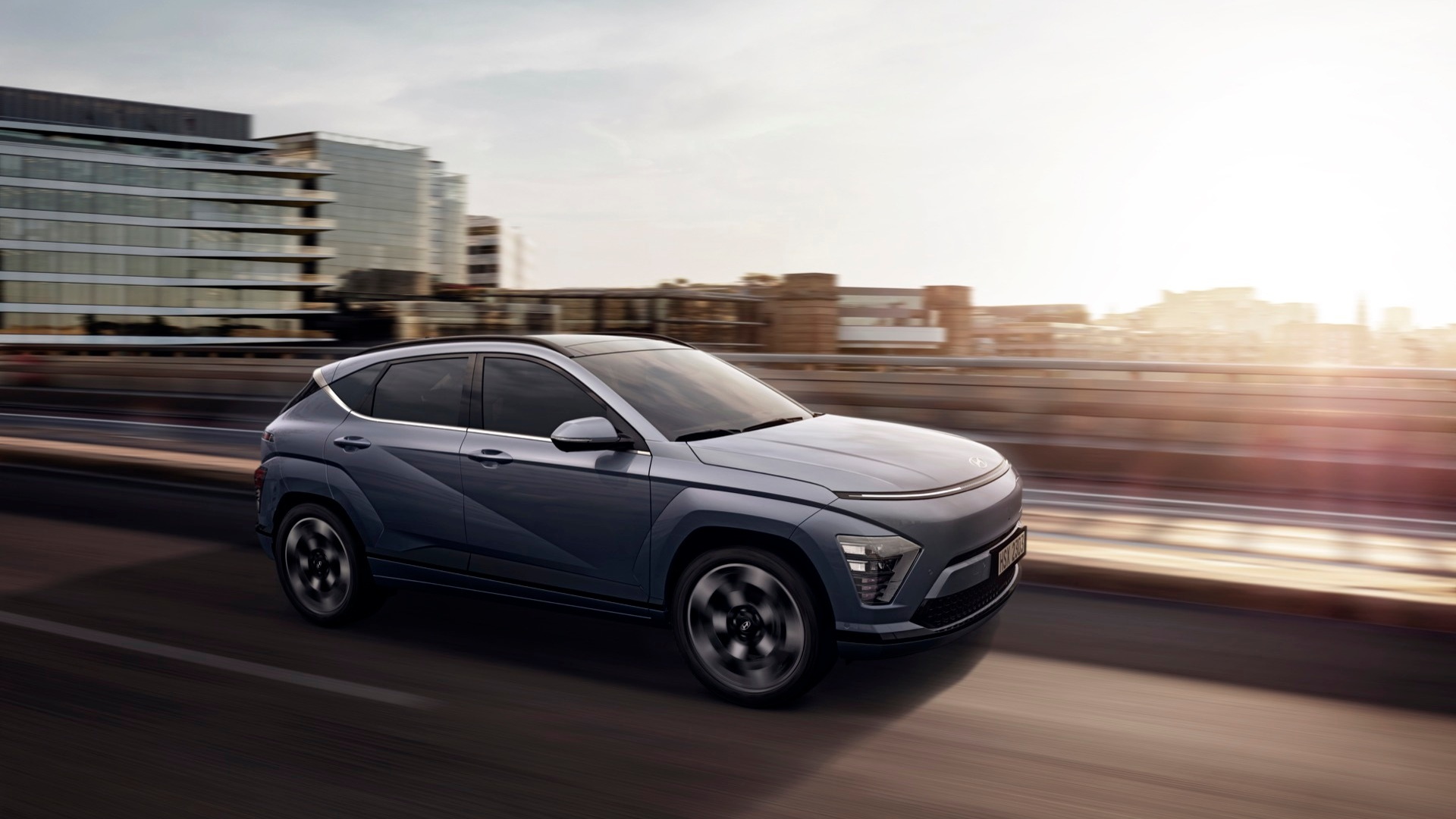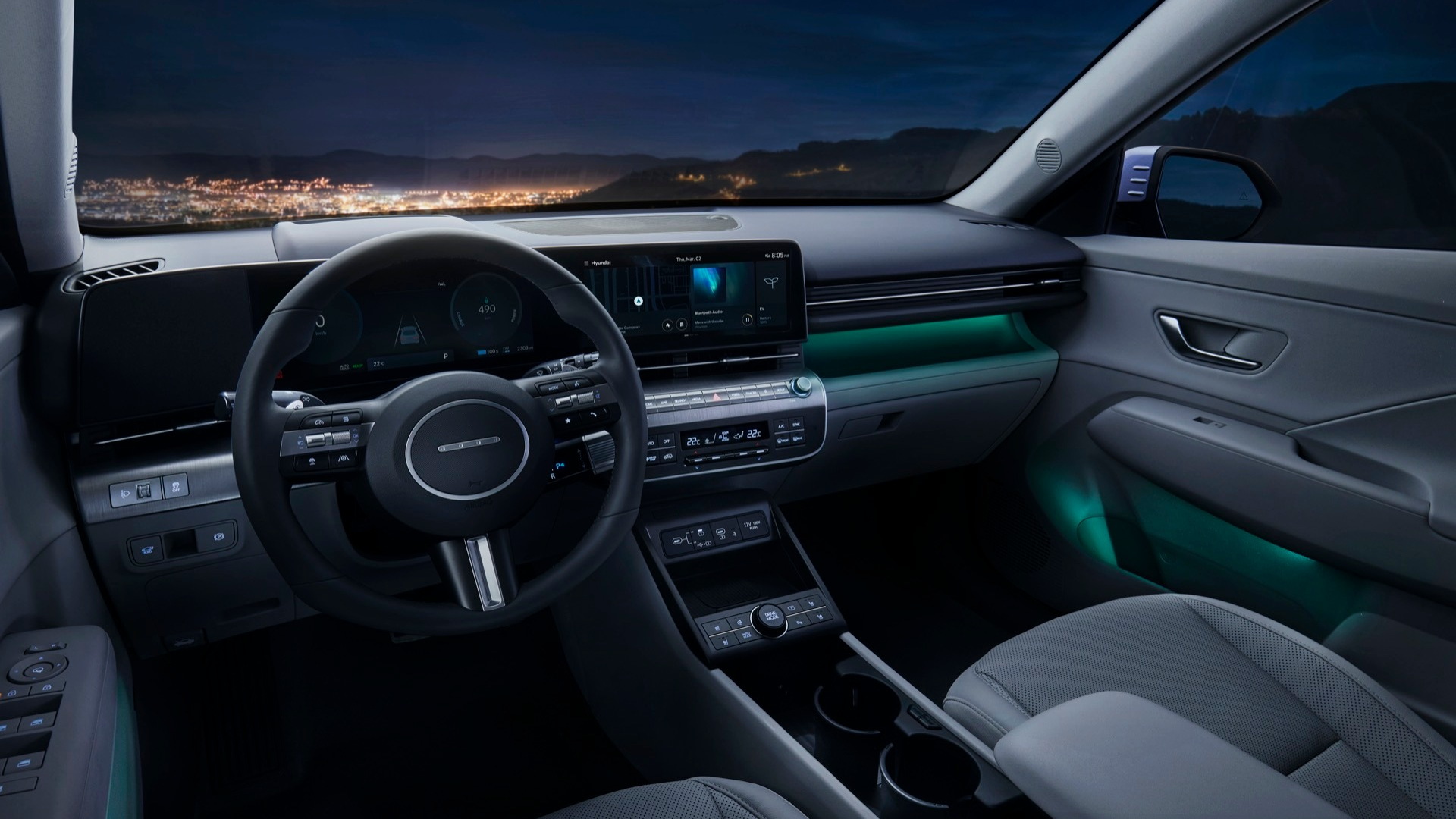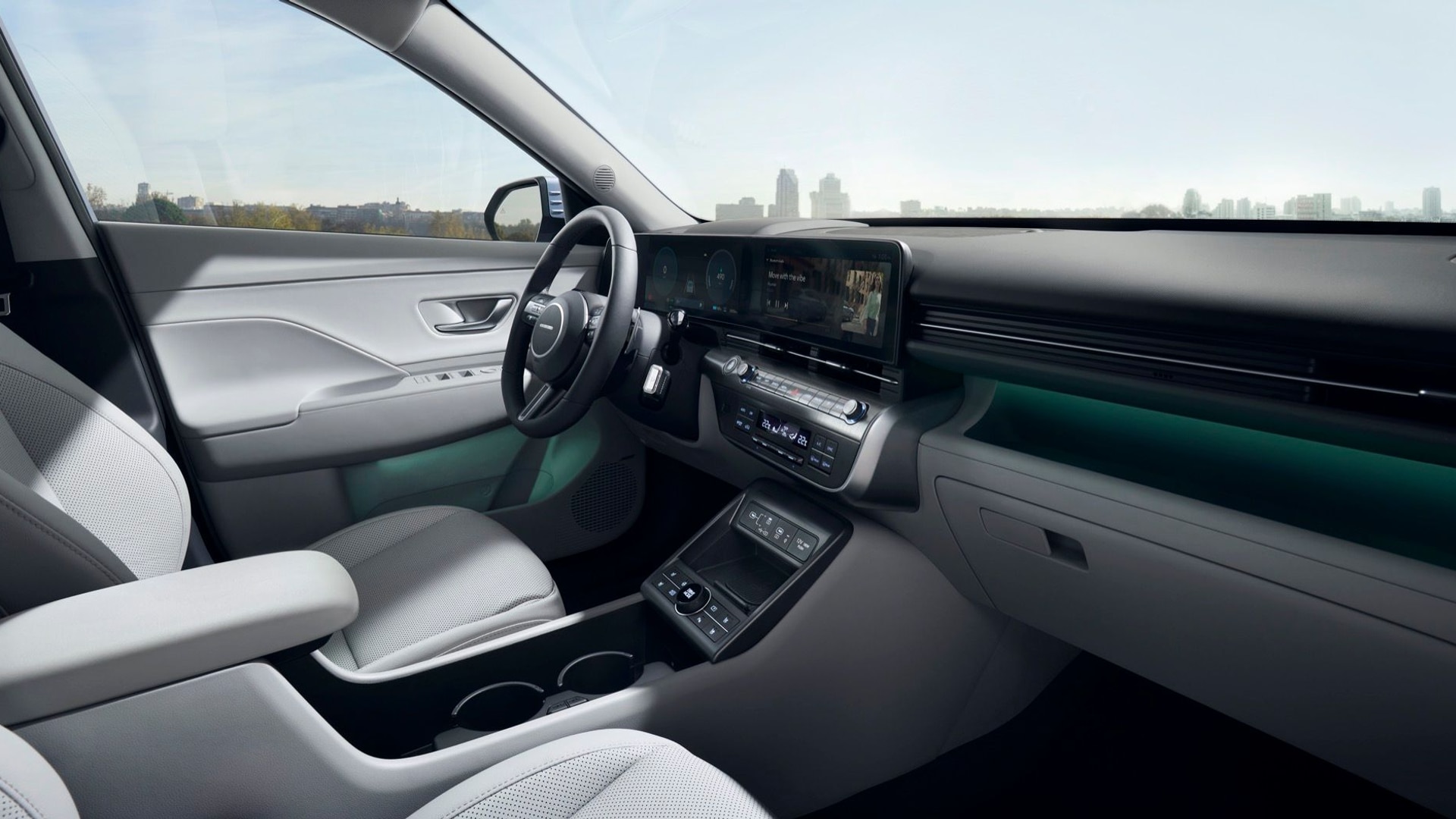Hyundai revealed global specs for the next-generation Kona Electric, on its way to the U.S. as a 2024 model, and most notably this model is getting sharper-looking and larger inside—with a longer range to boot.
The new Kona Electric is 171.5 inches long, 71.9 inches wide, and 62.0 inches tall overall, and it rides on a 104.7-inch wheelbase. Hyundai notes that each of those dimensions are larger than the outgoing version—and for the sake of passenger and cargo space, that’s 6.9 inches longer overall, with the wheelbase 2.4 inches longer than its predecessor.
The battery pack capacity has risen slightly, to 65.4 kwh. Hyundai estimates that the Kona Electric will deliver up to 304 miles of range on the European WLTP cycle. That figure doesn’t carry over to U.S. EPA range at any constant, but it assures a modest boost in U.S. EPA range over the outgoing model’s 258 miles.
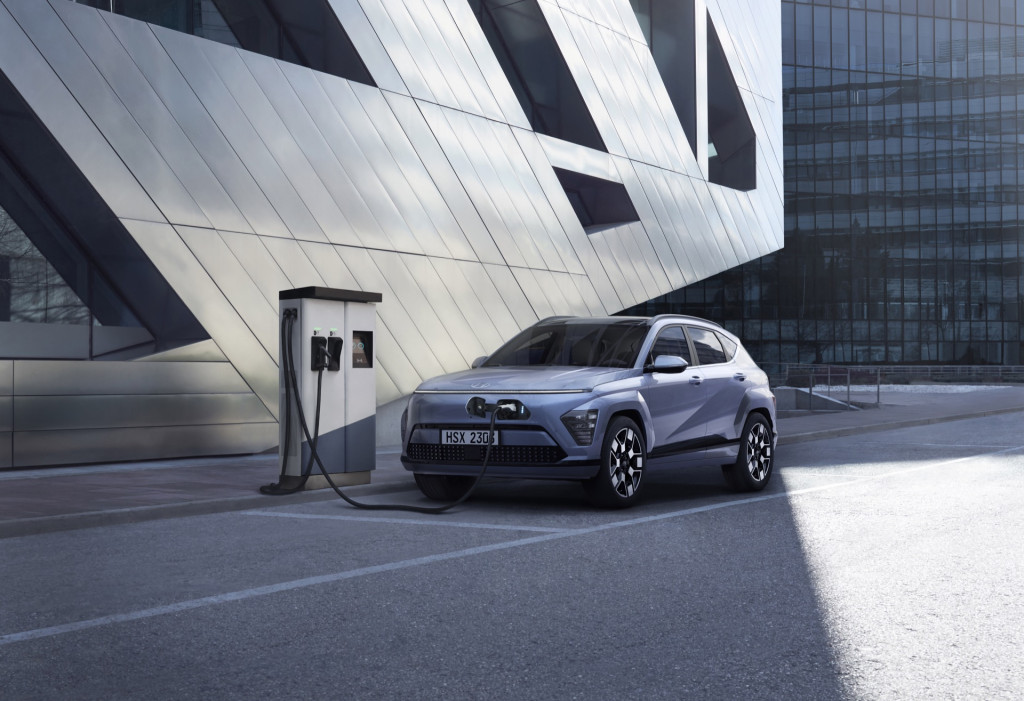
2024 Hyundai Kona Electric (global)
According to Hyundai, the Kona Electric can charge from 10% to 80% in 41 minutes. The Kona Electric now also has a vehicle-to-load (V2L) function that will output about 1.6 kw—good enough for powering multiple items like power tools or campsites, or potentially for backup power of some essentials in a power outage.
As before, the Kona Electric is driven by a single motor at the front wheels, making 215 hp and 188 lb-ft of torque. Especially given the upsize, don’t expect it to accelerate any quicker than the outgoing model’s circa-7.0-second 0-60 mph time indicates.
Regenerative braking is in the expected multi-mode form from Hyundai, including an i-Pedal mode that (mostly) provides one-pedal driving, as well as a smart regenerative setting.
The Kona Electric is again offered in gasoline or electric versions, with a hybrid also joining the lineup and yet to be detailed. Hyundai plans to offer a sporty N Line version of the Kona in all of its versions—including the Electric.
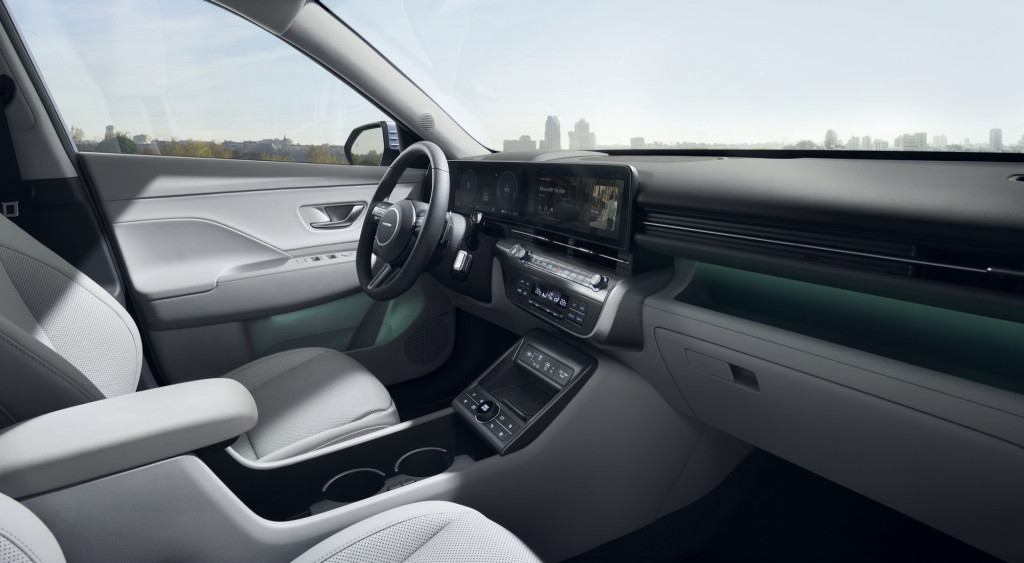
2024 Hyundai Kona Electric (global)
Hyundai describes the look of the new Kona lineup as “EV-led,” and in the scope of the Kona this essentially means a relatively low front end with no broad, prominent grille for any model in the lineup. Instead, the emphasis is on a wrap-around look at the front and rear, emphasizing the horizontal and perhaps in person making this model appear wider. At the front, a skid plate and wheel-arch cladding add just a bit of ruggedness, but this is no SUV by most Americans’ definition.
Inside, the new Kona follows a more horizontal look that also borrows from the design of the Ioniq 5 and Ioniq 6—much more than the Elantra sedan, for instance. The Kona Electric also inherits its dual 12.3-inch display screens (touchscreen in the center) from the Ioniq 5, and it now gets full vehicle over-the-air updates, a digital key system, and connected-car services. A head-up display is also available.

2024 Hyundai Kona Electric (global)
Hyundai also offers what it calls a Curveless Bench Seat for the second row, with a two-stage latch for rear-seat reclining. While it’s hard to see from initial images, the Kona Electric’s rather tall roofline may also help provide easier access to the back seat versus other EVs. Also, a power tailgate is offered for the first time.
A suite of next-generation driver-assist systems has also been added, including a Level 2 highway system that automates steering provided the driver maintains attention, as well as an evasive-steering feature which works with blind-spot monitors. A remote parking feature is also available.
Hyundai has also broadened the range of color combinations and interior themes on offer in the Kona Electric—with a black and red interior reserved for the sporty N Line version.
The Kona Electric's primary rival in the U.S. market is likely going to be the Chevrolet Bolt EUV, a model that's become much more competitive on pricing the past several model years. The EUV starts at $28,795 and will, by the time the new Hyundai arrives, likely be eligible for a $3,750 EV tax credit.
Hyundai hasn’t yet revealed U.S. pricing or trim-level details, but look for that and more soon. It’s expected to arrive at U.S. dealerships this fall.
